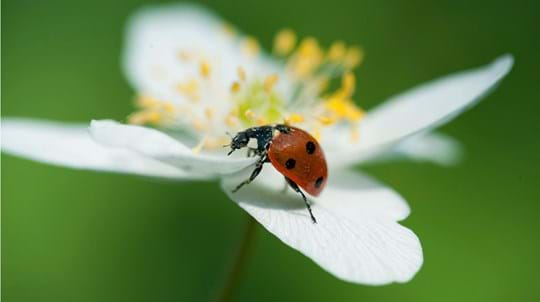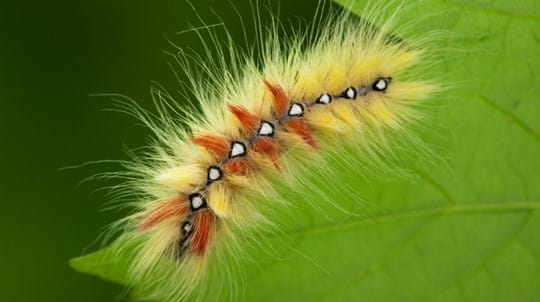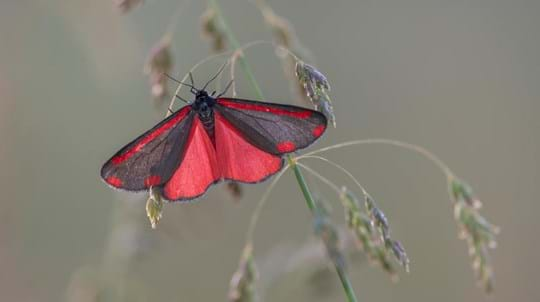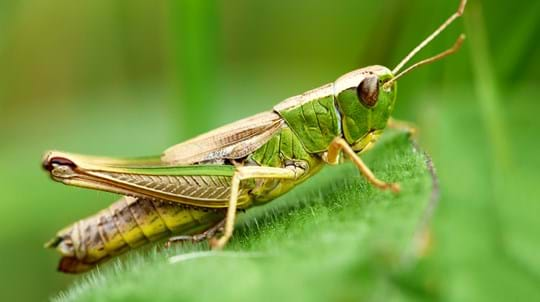Make your own haven for minibeasts
Provide food and shelter for bugs, beetles and other wildlife with our range of native trees, perfect for attracting wild visitors.
Buy trees for your garden
Content manager
There are a number of shieldbug species in the UK, characterised by their flat, often triangular bodies and distinctive, shield-like shapes on their backs. Learn to tell which is which with our quick and easy guide to some of Britain's most familiar types.
Bugs suck. No really, they do. Unlike beetles with their biting jaws, bugs (which are their own biological group - or order - of insect called Hemiptera) have piercing, beak-like mouthparts for extracting the juices from plants and other invertebrates. Some, including the infamous fleas and bedbugs, even suck blood. Good news though - shieldbugs don't bite people or pets!
Shieldbugs are sometimes known as 'stinkbugs' thanks to the smelly liquid they excrete to put off hungry predators.
The hawthorn shieldbug is the UK's largest and most commonly encountered species. It has a green 'shield' in the centre of its back framed by red sides and pronotum (the area directly behind the head). The tail end of the abdomen is also usually red. Look for the distinctive red 'shoulders' which help tell this species apart from the very similar birch shieldbug.
13-15mm in length.
Common and widespread across the UK, although less so in Scotland. Readily found in mixed woodland, hedgerows and gardens. Can be spotted all year round although usually hibernates over winter.
Mostly feeds on hawthorn berries and leaves, but sometimes also other trees such as birch, oak, rowan, cotoneaster and hazel.
Similar at first glance to the hawthorn shieldbug but smaller in size and more darkly patterned. The abdomen is never red-tipped and the 'shield' is not entirely green. The less pronounced 'shoulders' are dark brown.
8-10mm in length.
Common and widespread across the UK, particularly in birch woodland. Can be spotted all year round but generally hibernates in winter.
Feeds mainly on birch and hazel leaves as well as their developing catkins, but also sometimes aspen.
The non-native southern green shieldbug (Nezara viridula) is a recent arrival to the UK and has been reported on allotments in southern England. It lacks the black pinpoints and dark wing tips of our native species and has three to five pale spots along the top of its 'shield'.
Green all over as the name suggests, barring the area where the wing tips rest over the tail end. When viewed closely it is covered in tiny dark spots. Adults turn a bronze-brown colour closer to winter.
12-14mm in length.
Common and widespread in England, Wales and parts of Northern Ireland. Can be found in many different habitats including gardens, parks and woodland. Adults emerge from hibernation in May.
Sucks the sap of hazel and other deciduous trees and shrubs.
The forest bug is a large shieldbug with red legs, brown body and an orange, yellow or cream-coloured tip at the bottom of the 'shield'. Its 'shoulders' are slightly hooked and the fringe of the abdomen patterned with dark and pale squares.
10-15mm in length.
Common and widespread across the UK in woodland, gardens and orchards. Look for adults from July.
Sucks the sap of deciduous trees such as hazel, alder and oak. Also feeds on fruits and sometimes predates caterpillars and other insects.
The bronze shieldbug is one of four carnivorous shieldbug species found in the UK.
Similar in appearance to the forest bug but lacking the red legs and yellow tip at the bottom of the 'shield'. Has a pale band towards the end of each antenna and a pattern of yellow and dark squares along either edge of the abdomen.
10-12mm.
Less common than some of our other shieldbugs but widely spread in England, Wales and Northern Ireland. Scarce in Scotland. Found on trees in both deciduous and coniferous woodland.
Will feed on the sap of plants when young but mainly has a taste for caterpillars and other insect grubs, especially as an adult.
Mostly shades of brown all over, darkening to red-brown in places. The upper half of the 'shield' is usually black and the edges of the abdomen chequered. Females are easily identified in spring when brooding their eggs or protecting newly hatched nymphs. Males are much smaller than females and die off after mating in spring.
7-9mm in length.
Most common in south eastern and central England but can be found across the UK. Found mainly in birch woodland but also parks and gardens.
Purple-brown with a greenish 'shield' and chequered black and white edges to the abdomen. The antennae are also banded black and white. Unlike other similar shieldbug species, the body and legs are covered in fine hairs.
10-12mm in length.
Common and widespread in England and Wales, with small populations in Scotland and Northern Ireland. Found in hedgerows, woodland margins and also parks and gardens.
Feeds in the fruits and flowers of shrubs and other plants, including blackthorn, damson and other members of the Rosaceae family.
The gorse sheildbug has two colour forms, depending on when in the year the adult has emerged.
Predominantly green with bright green fringes and dark wing tips. Adults emerging later in the summer have a reddish colouration around a green 'shield' and all adults begin to look darker before hibernation in winter. Can be easily told apart from the similar green shieldbug by its red antennae and more rounded shape.
10-13mm in length.
Widespread across the UK wherever gorse is found, such as on heathland and coastal habitats, and can also be found in gardens.
Feeds on the flowers and seeds of gorse, as well as broom and other related plants.
The woundwort shieldbug was previously known by the scientific name Eysarcoris fabricii.
One of our smaller shieldbugs with greenish-grey colouration and black and white fringes. The 'shield' and head has a metallic, coppery sheen in the right light.
5-8mm in length.
Widespread in south eastern and central England but absent from most of Wales, Scotland and Northern Ireland. Found in hedgerows and woodland among undergrowth plants.
Sucks the sap of woundwort and dead-nettles.
A small black and white shieldbug with a rounded shape. Can be confused with the very similar Rambur's pied shieldbug (Tritomegas sexmaculatus), a recent arrival to the UK which was first recorded in Kent in 2011 and is thought to be spreading.
5.5-7mm in length, with males and females different sizes.
Widespread across south eastern and central England. Found in hedgerows, woodland margins and sometimes gardens where it is encountered at ground level among undergrowth plants.
Feeds on the seeds of dead-nettles and black horehound.
Provide food and shelter for bugs, beetles and other wildlife with our range of native trees, perfect for attracting wild visitors.
Buy trees for your garden
Blog
Amy Lewis • 31 Mar 2021

Blog
Amy Lewis • 22 Jul 2019

Blog
Charlotte Varela • 11 Aug 2023

Blog
Amy Lewis • 23 Apr 2021

Blog
Charlotte Varela • 09 Oct 2023

Wildlife is all around us, from sights and sounds to tracks and trails. Discover what's out there all year round with our identification guides.
See our easy ID guides